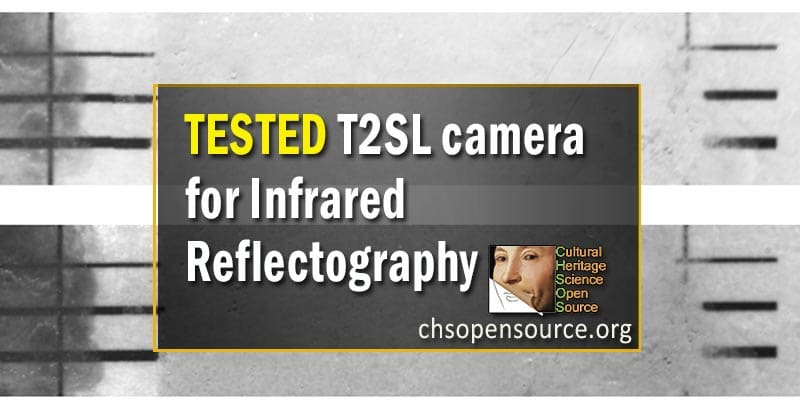
Read the new paper regarding imaging devices for infrared reflectography (IRR) :
A. Cosentino, Type II Super Lattice (T2SL) imaging technology for infrared reflectography of polychrome works of art, e-conservation Journal 5, 2016.
Artistic paints attenuate and diffuse infrared radiation less than visible light and thus infrared cameras can be used to inspect polychromed works of art for underdrawings and pentimenti. This paper discusses for the first time a Type II Super Lattice (T2SL) camera for infrared reflectography. A super lattice detector consists of a repeating sequence of very thin layers of different materials which create sub-bands whose corresponding bandgap energies determine the cut-off wavelength of the sensor. First introduced in 1980s, T2SL technology is currently gaining interest for its imaging application in the SWIR (Short Wave Infrared) range over 1700 nm which is the longest radiation that an InGaAs camera can detect. InGaAs technology has replaced the vidicon tube, the first used for infrared reflectography. The Xenics Xeva T2SL camera is sensitive out to 2350 nm, as were the vidicon tubes, but with all of the significant advantages that come from a totally digital technology. This paper illustrates the use of this camera coupled with the panoramic method and a cut-off infrared filter and evaluates its performance against a collection of 54 swatches of historical pigments. The results are compared with the two, more common, infrared imagers currently used for art examination: an InGaAs camera and a modified full spectrum digital camera. The extended sensitivity of the camera above the 1700 nm limit of the InGaAs constitutes a sizable advantage because it takes advantage of the increased transparency of certain pigments, such as malachite, that have their maximum transparency at about 2000 nm.
[post-content post_name=1-newsletter]






The extended sensitivity of the T2SL camera constitutes a sizable advantage over traditional InGaAs cameras. The InGaAs technology is fully developed and these cameras feature detectors with larger pixel counts compared to current T2SL cameras. This is a valuable feature for the panoramic infrared reflectography method in order to guarantee faster stitching, more precision and higher resolution. Furthermore, InGaAs cameras can operate at high temperature and consequently they are very lightweight and compact since they do not need bulky cooling systems. On the other hand, the extended sensitivity of the T2SL camera over the 1700 nm limit of the InGaAs allows taking advantage of the increased transparency of some pigments such as malachite that have their maximum transparency at about 2000 nm. T2SL technology is therefore very promising as a possible substitute of InGaAs cameras for more performant infrared reflectography of works of art.
[post-content post_name=1-pigments-checker]
[post-content post_name=panoramic-infrared-reflectography/]



